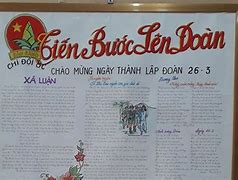
Màng Sinh Chất Có Cấu Trúc Động Là Nhờ
+ Lớp kép phospholipid: tạo thành một khung liên tục.
+ Lớp kép phospholipid: tạo thành một khung liên tục.
Bài tập cơ bản và nâng cao SGK Sinh 10
Câu 1: Hãy phân biệt giữa vận chuyển chủ động với vận chuyển thụ động.
- Vận chuyển các chất từ nơi có nồng độ thấp hơn đến nơi có nồng độ cao hơn (ngược chiều građien nồng độ)
- Nhờ các kênh prôtêin đặc hiệu trên màng
- Thường vận chuyển các chất có kích thước lớn hơn lỗ màng hoặc các chất phân cực: ion Na+, K+
- Vận chuyển các chất đi từ nơi có nồng độ cao hơn đến nơi có nồng độ thấp hơn (thuận theo chiều građien nồng độ
- Không cần tiêu tốn năng lượng
- Khuếch tán trực tiếp qua màng hoặc nhờ prôtêin xuyên màng
- Thường các chất có kích thước nhỏ hơn lỗ màng hoặc các chất khí có thể khuếch tán: O2, CO2, Glucozơ..
Câu 2: Tại sao khi muốn giữ rau tươi ta lại thường vẩy nước sạch vào rau?
Theo nguyên tắc thẩm thấu nước là vận chuyển nước một cách thụ động vào tế bào, nước vào trong tế bào làm tế bào trương lên → rau tươi hơn và không bị héo.
Đăng ký ngay khóa học DUO để được thầy cô lên lộ trình ôn thi tốt nghiệp ngay từ bây giờ nhé!
Câu 3: Ở phương thức ẩm bào làm thế nào mà tế bào có thể chọn lọc được các chất cần thiết trong số vô vàn các chất có ở môi trường bên ngoài để đưa vào bên trong tế bào?
Khi thực hiện quá trình ẩm bào ở trong điều kiện môi trường có rất nhiều chất ở môi trường bên ngoài thì tế bào có các các thụ thể đặc hiệu trên màng sinh chất để chọn lọc lấy những chất cần thiết có thể đi qua để đưa vào tế bào.
Câu 4: Điều kiện để xảy ra quá trình vận chuyển thụ động và vận chuyển chủ động là gì?
Điều kiện để xảy ra quá trình vận chuyển chủ động:Vận chuyển chủ động là phương thức vận chuyển các chất qua màng sinh chất của tế bào từ nơi có nồng độ thấp đến nơi có nồng độ cao (ngược chiều građien nồng độ) và cần tiêu tốn năng lượng, cần có các kênh prôtêin màng vận chuyển đặc hiệu.
Điều kiện để xảy ra cơ chế vận chuyển thụ động: Vận chuyển thụ động là cách thức vận chuyển các chất qua màng sinh chất của tế bào mà không tiêu tốn năng lượng tế bào (từ nơi có nồng độ chất tan cao đến nơi có nồng độ chất tan thấp – cơ chế khuếch tán). Hình thức vận chuyển này tuy không cần phải có năng lượng ATP nhưng cũng cần có một số điều kiện để có thể xảy ra:
- Kích thước của chất được vận chuyển phải nhỏ hơn đường kính lỗ màng.
- Nếu là vận chuyển có chọn lọc (như vận chuyển các ion) thì cần có kênh prôtêin mang đặc hiệu.
Câu 5: Tại sao khi rửa rau nếu ta cho nhiều muối ăn vào nước để rửa rau thì rau lại rất nhanh bị héo?
Khi rửa rau bằng nước muối, nồng độ chất tan môi trường ngoài tế bào (muối) cao hơn bên trong tế bào rau → môi trường ưu trương, chất tan sẽ nhanh chóng khuếch tán từ nơi có nồng độ cao hơn (bên ngoài) vào bên trong tế bào rau sống. Đồng thời thì nước bên trong tế bào rau cũng thẩm thấu từ trong tế bào rau ra ngoài để cân bằng thể tích khi lượng chất tan bên ngoài vào chiếm trong tế bào. Do đó, rau bị mất nước nhanh chóng nên dễ bị héo đi.
Một số cấu trúc câu bị động khác
Ngoài các cấu trúc trên, dưới đây là một vài cấu trúc bị động khác bạn có thể tham khảo:
Cấu trúc chủ động: Need/ want/ require/ deserve/ be worth + to V/ V-ing
Cấu trúc bị động: Need/ want/ require/ deserve/ be worth to be Vpp
Cấu trúc chủ động: S + avoid V-ing
Cấu trúc bị động: S + to be + avoided being Vpp + (by sb)
Cấu trúc chủ động: S + prevent … from V-ing
Cấu trúc bị động: Sb/ sth + to be prevent from V ing + (by sb)
Bị động với các động từ chỉ giác quan
Các động từ giác quan là các động từ chỉ nhận thức của con người như: See, hear, watch, look, notice, … Cấu trúc câu bị động với động từ chỉ giác quan như sau:
Công thức ở dạng chủ động: S + V + somebody + V-ing/ to V-inf
⟶ Công thức ở dạng bị động: S + to be + V(P2) + V-ing/ to V-inf
Exercise 4: Read the model answer to the following essay question. Choose the correct form of the verb
(Bài tập 4: Đọc câu trả lời mẫu cho câu hỏi tiểu luận sau. Lựa chọn hình thức đúng của động từ)
The number of people who own a car (1) is rising/ is being risen year upon year, but this is causing both traffic congestion and air pollution. I believe this issue (2) will only resolve/ will only be resolved if individual car owners make an effort to share transport and governments improve public transport systems.
The first way to address the problem is for individual citizens to make an effort (3) to use/ to be used their cars less. Of course, there are times when using a car is unavoidable, like when you have to travel long distances or need to travel during the night, but many times we use our cars for short journeys that could just as easily (4) make/ be made on foot. If car owners decided to never drive a distance that they could walk, this would cut down significantly the amount of traffic in our towns and cities.
Moreover, when people travel to the same places on a regular basis, such as the office or the gym, they should try to share the trip with a friend or family member. Far too many car journeys today (5) is made/ are made with only one person in the vehicle. If everybody carpooled with their colleagues tomorrow, car use (6) could reduce/ could be reduced by more than 50% overnight.
There is also a range of ways that the government (7) could be helped/ could help alleviate the problem. Firstly, the main reason why people choose to travel by car is the poor public transport service currently (8) is offering/ being offered in many cities. There are far too few bus services run even in major cities, and until people can be sure that they will never have to wait more than 10 minutes for a bus, they will choose to drive.
The same is true of Metro services, which run well during the day but stop functioning fat too early in the evening to be a viable alternative to cars. In addition, governments (9) should do/ should be done more to reward people who drive with one passenger or more in their cars. In Australia, there are special lanes for cars like these, and as these tend to move much more quickly than the regular traffic, more and more people are choosing to carpool every year.
To conclude, only when individuals start sharing cars and governments improve public transport infrastructure, will the problem of increased road traffic (10) solve/ be solved.
The number of people who own a car (1) is rising year upon year, but this is causing both traffic congestion and air pollution. I believe this issue (2) will only be resolved if individual car owners make an effort to share transport and governments improve public transport systems.
The first way to address the problem is for individual citizens to make an effort (3) to use their cars less. Of course, there are times when using a car is unavoidable, like when you have to travel long distances or need to travel during the night, but many times we use our cars for short journeys that could just as easily (4) be made on foot. If car owners decided to never drive a distance that they could walk, this would cut down significantly the amount of traffic in our towns and cities.
Moreover, when people travel to the same places on a regular basis, such as the office or the gym, they should try to share the trip with a friend or family member. Far too many car journeys today (5) are made with only one person in the vehicle. If everybody carpooled with their colleagues tomorrow, car use (6) could be reduced by more than 50% overnight
There is also a range of ways that the government (7) could help alleviate the problem. Firstly, the main reason why people choose to travel by car is the poor public transport service currently (8) being offered in many cities. There are far too few bus services run even in major cities, and until people can be sure that they will never have to wait more than 10 minutes for a bus, they will choose to drive.
The same is true of Metro services, which run well during the day but stop functioning too early in the evening to be a viable alternative to cars. In addition, governments (9) should do more to reward people who drive with one passenger or more in their cars. In Australia, there are special lanes for cars like these, and as these tend to move much more quickly than the regular traffic, more and more people are choosing to carpool every year.
To conclude, only when individuals start sharing cars and governments improve public transport infrastructure, will the problem of increased road traffic (10) be solved.
Dưới đây là một số câu hỏi liên quan đến câu bị động. Bạn có thể tham khảo để hiểu rõ hơn về cấu trúc này nhé!




















